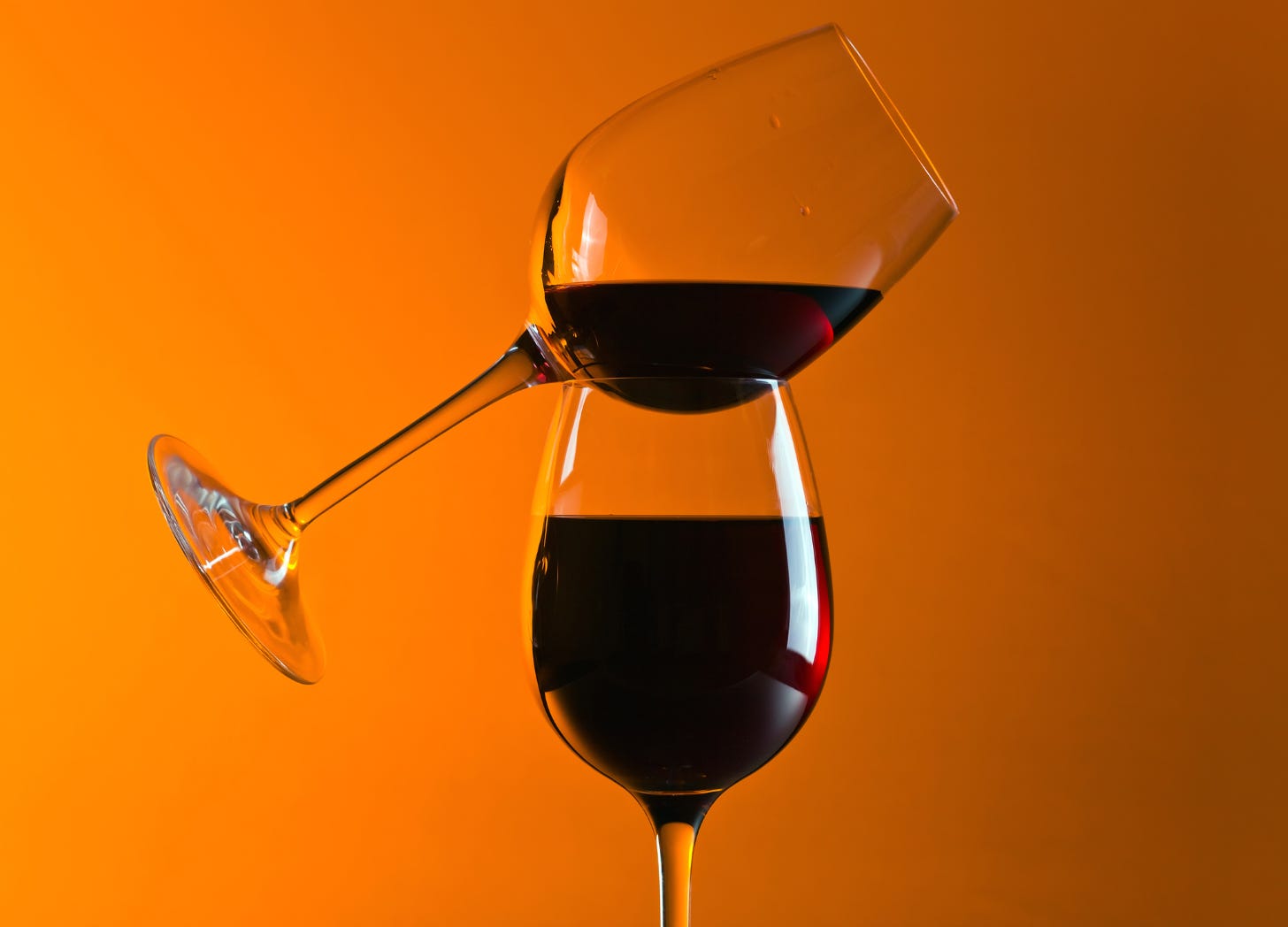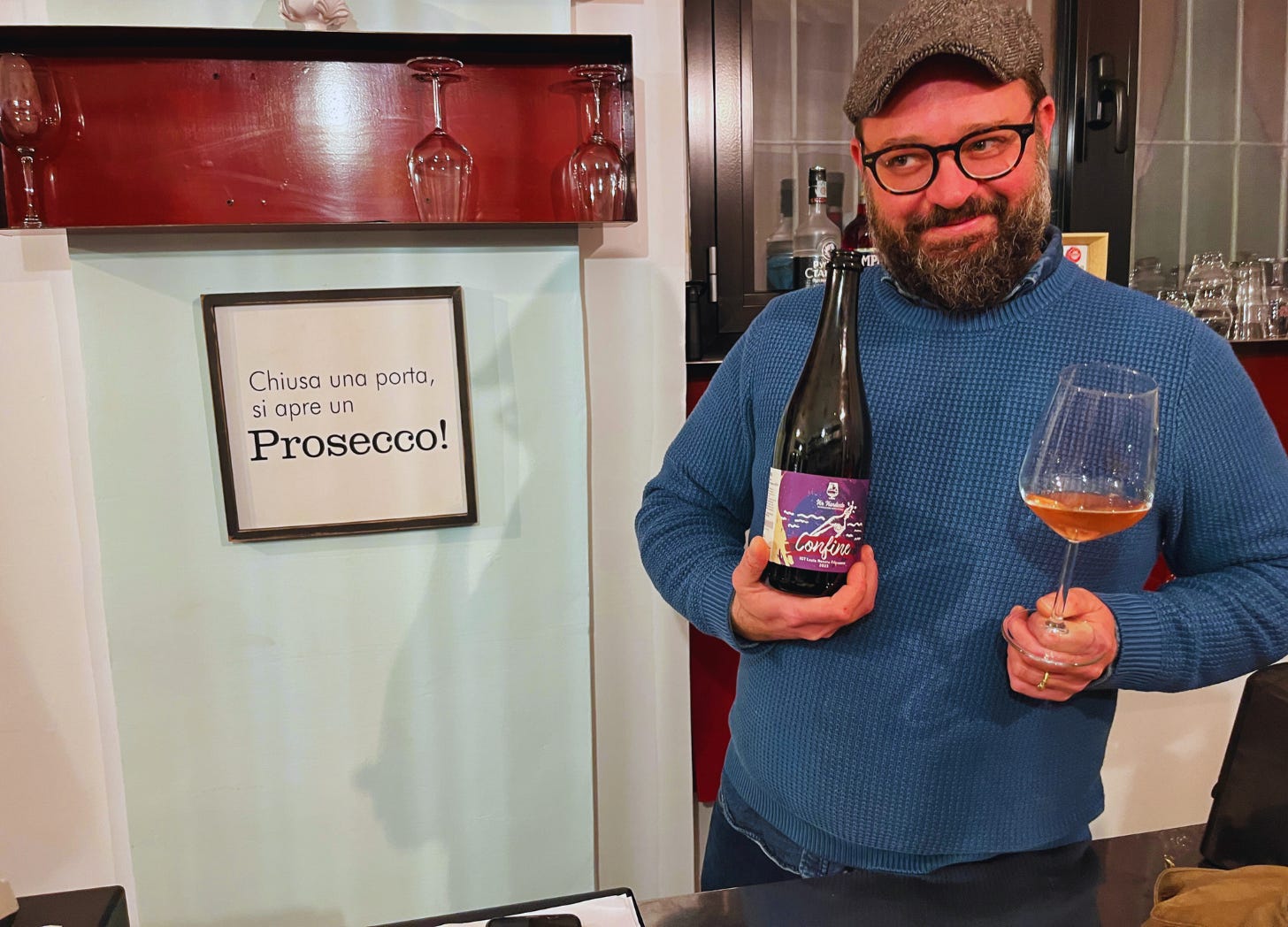Harmony: Finding Beauty in Balance
A dry wine primer, 10 pasta pairings, big birds & bad words, Italians on balance and harmony + meet Sommelier Mimmo Mancini and put his wine bar on your Rome hit list.
New Year. New You.
Issue #4
For much of the Northern Hemisphere, January brings sunless days, frigid temperatures, too-tight pants and the collectively cruel notion that now is the time to make big changes.
Islam’s Hijri New Year happens mid-(Gregorian) summer and Chinese New Year toward the end of (Gregorian) winter.
The Jewish New Year has always runs parallel to the academic year. Nothing says ‘new’ like back-to-school clothes, shoes, and supplies. The smell of a sharpened no. 2 pencil still gets my pulse racing.
New Year. New Problems.
No matter what calendar you use, the new year brings with it a strong sense of renewal, rebirth, and the subsequent resolutions intended to get us there.
At the heart of the word resolution, is ‘resolve’, from the Latin root, resòlvere: to loosen, untie, undo, or untangle. It’s a derivative of solvĕre: to melt.
The word sciogliere (to melt) shows up in modern Italian. Anything from ice and butter to a cold heart. Interestingly, it also means to (literally) let your hair down.
Solvĕre made it to English in the form of solvent and dissolve.
So here we are with problems to solve, starting with ourselves. We’re tied up in knots, stuck in bad habits. What we crave is a release.
Health is the most popular resolution by far.
Cue: dry January, gym membership promotions, and a vow to get back to a more “balanced” lifestyle following the indulgences of the holiday season.
By the way, I used Janaury to drink and revisit dry wines, and what exactly that means. Read it here.
Wouldn’t it be nice if we could just flow into the new year like a pat of melted butter?Instead, we’re up against an icy wall (in some cases literally) determined to burn our own fat.
Let’s face it. We are not the Night King and that icy wall is 30-90 days tall, unless spring comes early.
When we think of balance, scales come to mind (yikes, no!).
Everything in equal parts. Equilibrium. The quantitative aspect of balance can be intimidating and even demoralizing. The mere act of measuring—whether it’s our weight, or grams of sugar in a slice of boring bread—does not bring joy.
Imagine the perfect tang of caramel corn or a sea-salted chocolate-chip cookie. Sweet, salty, and dangerously addictive. You would say there’s a perfect balance of sweet and salty that keeps you yearning for another bite. This qualitative balance of unequal parts is harmonious.
Check any recipe. You’ll never see sugar and salt in equal measure. That’s precisely because of how we perceive sweetness and saltiness.
Life in Balance
Does balance equal happiness and well-being?
It’s a tool for sure, and part of the process. Taking a walk before or after a cupcake is a good thing. But If we’re only walking to eat the cupcake, are we really living?
The road to heaven is paved with good intentions, but most of all, it’s a long and uneven road. We will stumble. We will fall. We know that extreme diets and deprivation do not work. May as well enjoy the journey.
Like a beautiful piece of music, riveting prose, or even a well-crafted fragrance, life is a series of ups and downs, tension and release, and dissonance, and accord. All of which, it turns out, are components of harmony.
I asked some local Italian friends their thoughts on balance and harmony. Read it here.
Life in Harmony
Harmony comes from the Greek: ἁρµονία: union, accord, proportion.
In contemporary language it refers to a combination of elements into a pleasing or orderly (peaceful) whole or congruity.
In music, harmony is a combination of simultaneously sounded musical notes to that produce a pleasing effect.
My worldview is narrowed by the fact that I dislike math. I had no idea Pythagoras (of the eponymous triangle theorem) was such an avid philosopher. You could spend a week reading about him. I almost did, at the risk of my brain exploding.
Numbers were certainly his thing, especially patterns of ratio and proportion.
He and his followers applied them to all aspects of life—from a spherical theory of the earth to an idealized communal lifestyle, including dietary practices.
Music, Math, and Mysticism
Harmony is at the heart of Pythagoras' theory commonly referred to as musica universalis, or music of the Spheres. According to this theory, ratios and space between the sun, moon, and planets (aka relationships) produce individual tones or vibrations, akin to music.
Thus, the entirety of the universe plays like a sort of divine chorus. Math and music should be studied together, and that music could be translated as the divine word.
This meant that singing and dancing skills were hallmarks of a harmonious, virtuous life.
Music and dance certainly have the power to move our spirits and affect our moods. The man was on to something. If they had introduced this concept in math class, I could have be a nuclear physicist by now.
Balance vs. Harmony in Wine
When we talk about a balanced wine, we are referring to all of its multi-sensory aspects in equal measure.
If a wine is very acidic or tannic, it will tingle and feel spiky on the palate. A balanced wine will have an equal measure of silkiness or glossiness (likely a higher alcohol content).
Alcohol is volatile (like eau de parfum), so a balanced wine, high in alcohol should pack an aromatic punch.
When all of these components are qualitatively and quantitatively in equilibrium, we say the wine is balanced or well-made.
Sometimes, particular proportions—like Pythagoras’ planets, the relationship and interplay of the sensory characteristics of wine—produce an exceptionally pleasant experience.
Harmonious wines are captivating. They provoke conversation and inspire you drink more, but also to drink more slowly and meditatively. To enjoy the journey.
Check out 10 wine and pasta pairings and why they work so well.
Meet Mimmo Mancino and his Rome Wine Bar, Beverino
For Mimmo Mancini, 2025 started with a Champagne pop and never stopped. The certified sommelier and experienced wine bar host just opened his latest venture, Beverino.
Beverino Vineria features small production family-owned wineries and focuses on natural wines.
I see wine as a thread uniting people, places, and stories. I collaborate with small wineries that follow every stage of production from the ground to the glass, authentic wines that respect the land and nature.
Keep reading and discover the new wine bar here!
Italian Lessons for Life
Are Italians truly aspirational for their work-life balance and pleasure-seeking approach to life? I asked Roman residents to define balance and harmony, in their various professional and personal lives.
Then just for fun, I asked them what they ate yesterday. Read it here and decide for yourself.
Balancing Bad News and Big Birds
I returned to Rome following three weeks of below-freezing temperatures and daily bad news in New York and across the United States.
The headlines here offered a welcome reprieve, a light in the dark and something scandalous and ridiculous to balance out all that heaviness. Read at your own risk.
In short (not short for long), one of Rome’s two rival football (soccer) teams, Lazio, has a falcon mascot. Naturally, there’s also an appointed falconer, to handle the large bird.
The falconer was recently fired for sharing explicit photographs of his genitals following a penile implant.
I read the headline first in Italian, and I couldn’t help but giggle. If you speak Italian and you know even a handful of naughty slang, you’re probably laughing too.
Read on for a quick take on why second-language learners might be better at puns!
That’s it for now!
I’ll see you next month.
XOXO,
Annie









